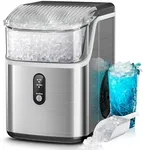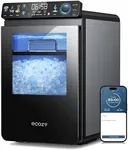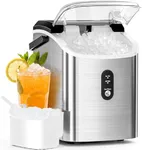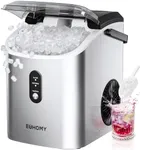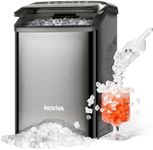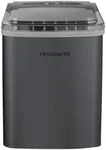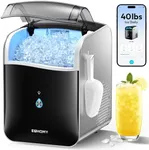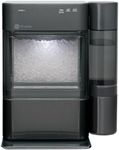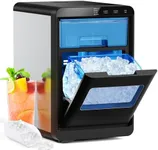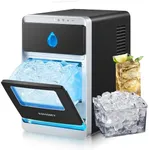Buying Guide for the Best Countertop Ice Makers
Choosing the right countertop ice maker begins with thinking about how much ice you actually need, how often you use it, and how much space you have available in your kitchen. A good ice maker should be easy to use, quick to produce ice, fit comfortably on your countertop, and suit your style of entertaining or daily routine. By understanding the key features, you can match a device to your habits, whether you're making cold drinks for a few people or hosting larger gatherings.Ice Production CapacityIce production capacity tells you how much ice the machine can make in a 24-hour period. This is important because it helps you determine whether the ice maker will keep up with your demands. Smaller units might produce around 20 pounds per day, which is enough for personal or small family use, while larger units can make over 30 pounds a day, suitable for parties or frequent entertaining. Think about your typical usage: if you mostly use ice for a couple of drinks each day, a lower capacity is fine; if you often host friends or have a big family, higher capacity will be better.
Ice Storage CapacityThis specification refers to how much ice the machine can hold at one time before you need to remove some. A larger storage bin means you don't have to empty it as often, making it more convenient if you want a steady supply. Storage bins on countertop models usually range from a few pounds up to around 3 pounds. If you want ice ready for more people simultaneously, aim for a bigger storage capacity; for single or occasional use, smaller bins are sufficient.
Ice Cube Shape and SizeDifferent ice makers produce different shapes and sizes of ice cubes, such as bullet, nugget, or square cubes. This matters because the ice's shape affects how quickly it cools drinks, melts, and fits into bottles or glasses. Some models let you select the size (small, medium, or large). If you have a specific use, like chilling bottles or making cocktails, think about what size and shape fit best; nugget or chewable ice might be nice for everyday drinks, while larger cubes melt slower and are better for whiskey or cocktails.
Cycle TimeCycle time is how long it takes the machine to make a single batch of ice, often listed in minutes. A shorter cycle time (around 6-10 minutes per batch) means you'll get fresh ice more quickly, which is useful for parties or when you need ice in a hurry. If you're patient or use ice more gradually, a slower cycle might not matter much. Consider your regular ice needs and how quickly you expect to need new batches.
Water Refill MethodSome ice makers require you to manually add water, while others may have options for connecting to a water line. Manual-fill models offer the most flexibility and are easy to move, while water-line connected units are more convenient if you want a steady supply without having to refill. Consider whether you want portability or convenience; if you plan to use the machine in different places (like events or camping), manual fill is best, but for a permanent kitchen spot, a water line can be handy.
Ease of CleaningHygiene is important because leftover water or ice can breed bacteria. Some machines come with self-cleaning functions, while others require you to wipe them down manually. A self-cleaning feature saves effort and keeps your ice tasting fresh, especially if you use the machine every day. If you want low maintenance, look for models with simple cleaning processes or built-in cleaning cycles.
Size and PortabilityCountertop ice makers come in different shapes and sizes, affecting how much space they take up and how easy they are to move around. Smaller, lighter models fit tighter spaces and are easier to store or take on trips, while larger units might be more stable for frequent home use. Think about the space you have available, whether you plan to move the machine often, and choose a size that fits your countertop and lifestyle.
Noise LevelAll ice makers make some noise when running, especially during the ice-making process. Some are quieter than others, important if you have an open kitchen or use the appliance during quiet times. Manufacturers may describe their machines as 'quiet,' but you can also check for user reviews. If you're sensitive to noise or plan to use the machine in communal spaces, aim for quieter models.
